

Frederic Bazille: Prophet of Impressionism, November 13, 1992 through January 24, 1993 (Image: PHO_E1992i024.jpg Brooklyn Museum photograph, 1992)
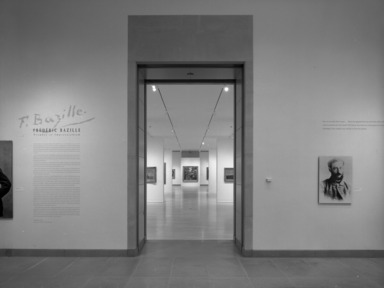
Frederic Bazille: Prophet of Impressionism, November 13, 1992 through January 24, 1993 (Image: PHO_E1992i025.jpg Brooklyn Museum photograph, 1992)

Frederic Bazille: Prophet of Impressionism, November 13, 1992 through January 24, 1993 (Image: PSC_E1992i089.jpg Brooklyn Museum photograph, 1992)

Frederic Bazille: Prophet of Impressionism, November 13, 1992 through January 24, 1993 (Image: PSC_E1992i090.jpg Brooklyn Museum photograph, 1992)
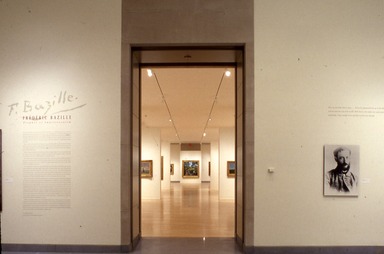
Frederic Bazille: Prophet of Impressionism, November 13, 1992 through January 24, 1993 (Image: PSC_E1992i091.jpg Brooklyn Museum photograph, 1992)
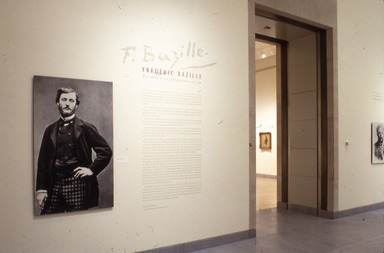
Frederic Bazille: Prophet of Impressionism, November 13, 1992 through January 24, 1993 (Image: PSC_E1992i092.jpg Brooklyn Museum photograph, 1992)

Frederic Bazille: Prophet of Impressionism, November 13, 1992 through January 24, 1993 (Image: PSC_E1992i093.jpg Brooklyn Museum photograph, 1992)
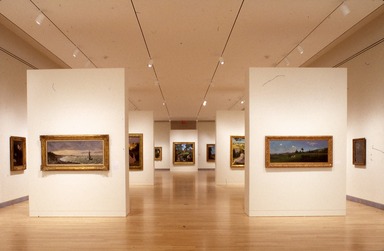
Frederic Bazille: Prophet of Impressionism, November 13, 1992 through January 24, 1993 (Image: PSC_E1992i094.jpg Brooklyn Museum photograph, 1992)

Frederic Bazille: Prophet of Impressionism, November 13, 1992 through January 24, 1993 (Image: PSC_E1992i095.jpg Brooklyn Museum photograph, 1992)
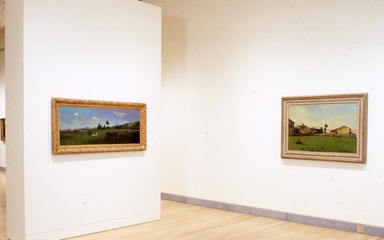
Frederic Bazille: Prophet of Impressionism, November 13, 1992 through January 24, 1993 (Image: PSC_E1992i096.jpg Brooklyn Museum photograph, 1992)
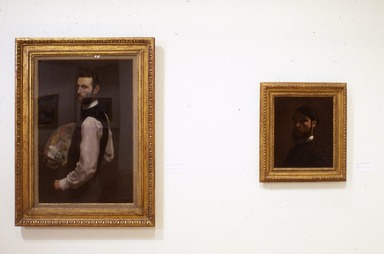
Frederic Bazille: Prophet of Impressionism, November 13, 1992 through January 24, 1993 (Image: PSC_E1992i097.jpg Brooklyn Museum photograph, 1992)

Frederic Bazille: Prophet of Impressionism, November 13, 1992 through January 24, 1993 (Image: PSC_E1992i098.jpg Brooklyn Museum photograph, 1992)
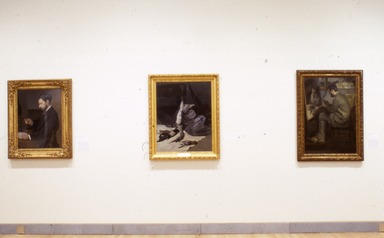
Frederic Bazille: Prophet of Impressionism, November 13, 1992 through January 24, 1993 (Image: PSC_E1992i099.jpg Brooklyn Museum photograph, 1992)
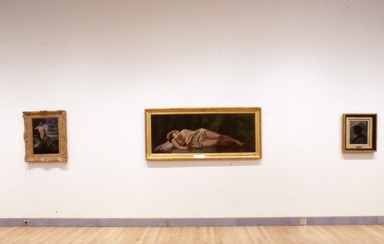
Frederic Bazille: Prophet of Impressionism, November 13, 1992 through January 24, 1993 (Image: PSC_E1992i100.jpg Brooklyn Museum photograph, 1992)
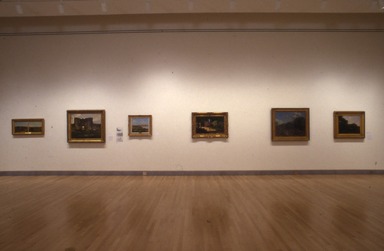
Frederic Bazille: Prophet of Impressionism, November 13, 1992 through January 24, 1993 (Image: PSC_E1992i101.jpg Brooklyn Museum photograph, 1992)
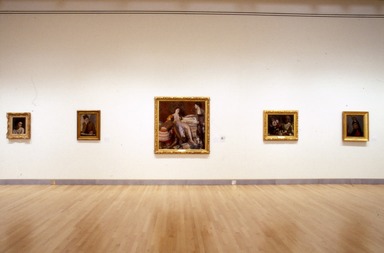
Frederic Bazille: Prophet of Impressionism, November 13, 1992 through January 24, 1993 (Image: PSC_E1992i102.jpg Brooklyn Museum photograph, 1992)
Frederic Bazille: Prophet of Impressionism
-
November 1, 1992
EXHIBITION TO INAUGURATE PORTION OF NEWLY RENOVATED WEST WING
The first major exhibition in the United States in almost two decades of works by little-known, but pivotal French painter Frédéric Bazille (1841-1870), whose career was cut short by his death at the age of 28 in the Franco-Prussian War, will be on view at The Brooklyn Museum from November 13, 1992, through January 24, 1993. Entitled Frédéric Bazille: Prophet of Impressionism, the exhibition will include some 50 paintings and works on paper. It will inaugurate the fourth-floor special exhibition gallery of the newly renovated West Wing of The Brooklyn Museum.
The exhibition has been made possible at The Brooklyn Museum by a generous grant from the Iris and B. Gerald Cantor Foundation.
Frédéric Bazille: Prophet of Impressionism, which incorporates newly discovered archival material from the artist’s family, has been organized by The Brooklyn Museum in association with The Dixon Gallery and Gardens, Memphis. It was developed from an exhibition of Bazille and his contemporaries entitled Frédéric Bazille et ses amis impressionnistes, organized by the City of Montpellier and the Musée Fabre, the largest repository of Bazille’s work. It has been curated in the United States by Elizabeth Easton, Associate Curator of European Painting and Sculpture at Brooklyn, who has expanded the exhibition with the addition of several works that were not able to travel to Montpellier. The exhibition will travel to The Dixon Gallery and Gardens, where it will be on view February 14-April 25, 1993.
Admired by artists, critics, and scholars for the freshness and directness of his canvases and for the way in which he assimilated both radically new and academic techniques, Bazille may have become one of the greatest artists of the Impressionist generation had he lived. The works included in the exhibition range from plein-air sketches and portraits of himself and his artist friends to the Veronese-inspired La Toilette, which was rejected by the Salon in the year of Bazille’s death.
Frédéric Bazille was born in Montpellier in the south of France to an affluent middle-class family with connections to the Parisian intelligentsia. After failing his medical exams in 1864, he began to devote his full attention to painting. Although with the support of his family he set up a studio in Paris, he continued his attachment throughout his life to his native city which, along with the surrounding countryside, was the subject of more than half of his work. Throughout his short career Bazille was the intimate of many other painters, including Renoir and Monet, with whom he shared a studio for a time, as well as Cézanne, Fantin-Latour, Manet, Sisley, and others. At the outbreak of the Franco-Prussian War, Bazille enlisted in the Third Infantry, the most dangerous of the shock troops. A month short of his 29th birthday, he was killed in an attack on Beaune-la-Rolande. His body was found by his father and borne home on a cart to his native Montpellier for burial.
Like the early works of his better-known friends, Bazille’s landscapes and portraits are painted with the clarity and freshness that have become synonymous with the early years of Impressionism. His untimely death, however, has caused him to be excluded from most of the major new scholarly exhibitions on Impressionism, which begin their focus in the 1870s. The most recent exhibition of his work was in 1978 at The Art Institute of Chicago.
“Bazille’s oeuvre is small and the majority of his works will be included in the exhibition. For the first time museum-goers on the East Coast will have an opportunity to view the impressive work of this important, but relatively unknown artist who was one of the outstanding painters of his generation,” comments Elizabeth Easton.
An accompanying catalogue published by The Brooklyn Museum is the only available book in English about Bazille. Included are essays by Jean-Patrice Marandel, Curator of European Paintings at The Detroit Institute of Arts, who curated the Chicago exhibition; Dianne Pitman, a Bazille scholar whose dissertation from Johns Hopkins was the first devoted to his work; and François Daulte, author of the Bazille catalogue raisonné.
Frédéric Bazille: Prophet of Impressionism has been organized by The Brooklyn Museum in association with The Dixon Gallery and Gardens, Memphis. It was developed from an exhibition of Bazille and his contemporaries entitled Frédéric Bazille et ses amis impressionnistes organized by the City of Montpellier and the Musée Fabre.
The exhibition is supported by an indemnity from the Federal Council on the Arts and Humanities. Federal Express Corporation is the official carrier for the exhibition. Support for the English edition of the catalogue was provided by the Iris and B. Gerald Cantor Foundation and the Andrew W. Mellon Foundation.
The Iris and B. Gerald Cantor Foundation was established in 1978 to fund medical, educational, and cultural institutions and programs. Among its many activities, the Foundation organizes exhibitions based on works from the Cantors’ extensive art collection, which includes the world’s most comprehensive private collection of Auguste Rodin sculptures.
Brooklyn Museum Archives. Records of the Department of Public Information. Press releases, 1989 - 1994. 07-12/1992, 180-183.
View Original -
November 1, 1992
1841
Born on December 6 in Montpellier in the south of France to Camille-Victorine-Marguérite Vialars and Gaston Bazille.
1845
Birth of his younger brother, Claude Marc Bazille, on May 9.
1859
Receives his Bachelor of Sciences diploma on April 9. Registers at the medical school in Montpellier on September 1. Takes drawing lessons with the Baussans, father and son, sculptors in Montpellier, during the years preceding his departure for Paris.
1860
Receives satisfactory results on first-year medical school examinations.
1861
Defers second-year medical school examinations. Takes them again on September 11 with mediocre results.
1862
Receives satisfactory results on end-of-year examinations. Departs for Paris on November 1. Introduced into the studio of Charles Gleyre by a friend of his cousin, the painter Eugène Castelnau. Registers at the Paris medical school.
1863
Begins to write his parents about the possibility of renting his own studio. In March meets Claude Monet and the son of Viscount Lepic, later a friend of Degas, in the Gleyre studio. Spends eight days in the little town of Chailly with Monet, who gives him some painterly advice. Attends spring Salon exhibition often. Spends the summer in Montpellier and travels back to Paris in late September with a letter of recommendation to Gustave Courbet, provided by Auguste Fajon. Cultivates a friendship with Monet, who invites him to spend a few days at Le Havre.
1864
Rents his first studio on January 15 with a painter friend, Émile Villa, also from Montpellier and a student of Gleyre, at 119 rue de Vaugirard. Takes his medical examinations, which were postponed several times, and fails first attempt at anatomy examination. Leaves Paris again with Monet to paint in Honfleur. In July, having returned to Paris, he prepares for medical examinations, which he again fails. With little hope for a medical career, Bazille is advised by Monet to seriously apply himself to painting. Goes on a painting holiday in Méric where he paints The Pink Dress. Returns in November to Paris but no longer studies at Gleyre’s studio. Frequently works in Monet’s studio to take advantage of the models.
1865
Moves with Monet into a new studio just above Delacroix’s and paints Studio on the rue de Furstenberg. Returns to Chailly in May, when he probably paints Landscape at Chailly and makes another trip there in August at Monet’s request, where he poses for Monet’s Déjeuner sur l’herbe. Monet injures himself, and Bazille portrays him in The Improvised Field Hospital. Spends most of the fall in Montpellier.
1866
Rents a new studio at 22 rue Godot de Mauroy. Submits two works to the Salon: Young Woman at the Piano is refused; Still Life of Fish is accepted. Moves to another studio on the rue Visconti with Auguste Renoir, whom he knew from the Gleyre studio. Paints The Terrace at Méric and busies himself over the winter with nude figure studies.
1867
Monet stays with Bazille and Renoir for a month. The Terrace at Méric and the first Portrait of Edmond Maître are refused by the Salon. With Renoir, Sisley, and others, he signs a petition calling for a Salon des Refusés and becomes interested in the possibility of a regular exhibition forum, which is abandoned for lack of funds. Paints Studio on the rue Visconti in April-May. Bazille buys Monet’s painting Women in the Garden for 2,500 francs. Spends summer in Aigues-Mortes, where Monet frequently writes him for money. Upon his return to Paris, rents a much larger studio in the Batignolles quarter.
1868
Develops deep friendship with Edmond Maître. Finishes The Family Gathering and exhibits it along with Flower Pots at the Salon. Begins studies for Grape Harvest. Named godfather to Jean Monet, son of Monet and Camille Doncieux.
1869
Paints second Portrait of Edmond Maître. View of the Village accepted for the Salon. Paints Summer Scene and reworks Fisherman with a Net. Attends opera and concerts with friends Renoir and Maître.
1870
Rents new studio on rue des Beaux-Arts in the same building as Fantin-Latour. In spring paints La Toilette and two versions of African Woman with Peonies. The Bathers is accepted at the Salon. France declares war against Prussia on July 19, 1870. Bazille enlists in the Third Regiment of Zouaves on August 16 and sets sail on August 30 from Philippeville. On September 27 his regiment leaves Algeria. On November 28 Bazille is killed at the battle of Beaune-la-Rolande by two bullets in the stomach.
Brooklyn Museum Archives. Records of the Department of Public Information. Press releases, 1989 - 1994. 07-12/1992, 189-190.
View Original -
November 1, 1992
WORKS IN THE EXHIBITION
All works are by Frédéric Bazille unless otherwise stated. Dimensions are given in centimeters; height preceeds width. Works are listed alphabetically within chronological order, undated works last. An asterisk (*) after a title indicates color slides are available; a plus sign (+) indicates 8 x 10 inch black and white prints are available.
MALE NUDE
1863
Charcoal on paper, 62 x 47
Montpellier, Musée Fabre
SAINT-SAUVEUR
1863
Oil on canvas, 75 x 120
New York, Private collection
THE MYSTIC MARRIAGE OF SAINT CATHERINE
(Copy after Veronese)
1863-64
Oil on canvas, 125 x 125
Beaune-la-Rolande, parish church
THE PINK DRESS
1864
Oil on canvas, 145 x 110
Paris, Musée d’Orsay
RECLINING NUDE
1864
Oil on canvas, 70 x 180
Montpellier, Musée Fabre
THE SCOTER-DUCK
1864
Oil on canvas, 45 x 37
New York, Private collection
SOUP BOWL COVERS
1864
Oil on canvas, 22 x 35
Private collection
Recto: Study for RECLINING NUDE/
Verso: PORTRAIT OF A MAN
1864
Charcoal on paper, R: 42 x 57; V: 57 x 42
Montpellier, Musée Fabre
WOMAN VIEWED FROM BEHIND
1864
Oil on canvas, 63 x 48
Paris, Private collection (courtesy of Galerie Schmit)
THE EDGE OF THE FONTAINEBLEAU FOREST
(n.d.)
Oil on canvas, 60 x 73
Paris, Musée d’Orsay
THE FARM AT SAINT-SAUVEUR
1865
Oil on canvas, 60 x 140
Paris, Private collection (courtesy of Galerie Schmit)
THE IMPROVISED FIELD HOSPITAL
(Monet after his accident at the Inn of Chailly)
1865
Oil on canvas, 47 x 62
Paris, Musée d’Orsay
LANDSCAPE AT CHAILLY
1865
Oil on canvas, 82 x 105
Chicago, The Art Institute of Chicago, Charles H. and Mary F.S. Worcester Collection
SEASCAPE (THE BEACH AT SAINTE-ADRESSE)
1865
Oil on canvas, 50 x 140
Atlanta, The High Museum of Art, Gift of the Forward Arts Foundation in honor of Frances Floyd Cocke
STUDIO ON THE RUE DE FURSTENBERG *
1865
Oil on canvas, 80 x 65
Montpellier, Musée Fabre
STILL LIFE OF FISH
1866
Oil on canvas, 63 x 83
Detroit, The Detroit Institute of Arts
TWO HERRINGS
1866-67
Oil on canvas, 41 x 27
Private collection
AIGUES-MORTES +
1867
Oil on canvas, 40 x 55
Montpellier, Musée Fabre
PORTE DE LA REINE AT AIGUES-MORTES
1867
Oil on canvas, 80.6 x 99.7
New York, The Metropolitan Museum of Art
THE ROSE LAURELS (THE TERRACE AT MÉRIC)
1867
Oil on canvas, 55.9 x 99.1
Cincinnati, Cincinnati Art Museum
STILL LIFE WITH HERON *
1867
Oil on canvas, 100 x 79
Montpellier, Musée Fabre
STUDIO ON THE RUE VISCONTI
1867
Oil on canvas, 64 x 49
Richmond, Virginia Museum of Fine Arts, Collection of Mr. and Mrs. Paul Mellon
Study for THE FAMILY GATHERING
1867
Charcoal and pencil on paper, 30 x 30
Paris, Musée du Louvre
YOUNG WOMAN WITH LOWERED EYES
1867
Oil on canvas, 46 x 38
Private collection
FRÉDÉRIC BAZILLE AT SAINT-SAUVEUR +
Before 1868
Oil on canvas, 40 x 31
Montpellier, Musée Fabre
FISHERMAN WITH A NET * +
1868
Oil on canvas, 134 x 83
Zurich, Rau Foundation for the Third World
FLOWERS
1868
Oil on canvas, 130 x 97
Grenoble, Musée de Peinture et de Sculpture
PORTRAIT OF ALPHONSE TISSIÉ *
1868
Oil on canvas, 58 x 47
Montpellier, Musée Fabre
VIEW OF THE VILLAGE * +
1868
Oil on canvas, 130 x 89
Montpellier, Musée Fabre
VIEW OF THE VILLAGE
1868
Etching, 24 x 16.2
Montpelier, Musée Fabre
Studies for A GRAPE HARVEST
1868-69
Oil on canvas, 38 x 92 (each)
Montpellier, Musée Fabre
PORTRAIT OF EDMOND MAITRE +
1869
Oil on canvas, 84 x 65
Washington, D.C., National Gallery of Art, Collection of Mr. and Mrs. Paul Mellon
SUMMER SCENE (BATHERS) * +
1869
Oil on canvas, 158.2 x 158.8
Cambridge, Massachusetts, Fogg Art Museum, Harvard University Art Museums,
Gift of Mr. and Mrs. John B. O’Hara Fund and a gift from Colonel C. Michael Paul
AFRICAN WOMAN WITH PEONIES +
1870
Oil on canvas, 60 x 75
Montpellier, Musée Fabre
BUST OF RUTH
1870
Charcoal on paper, 12 x 17
Private collection
HEAD, ARM, AND BUST OF RUTH
1870
Charcoal on white paper, 60 x 47
Private collection
LANDSCAPE ON THE BANKS OF THE LEZ
1870
Oil on canvas, 137.2 x 203.2
Minneapolis, The Minneapolis Institute of Arts
LOUIS AURIOL FISHING *
Circa 1870
Oil on canvas, 103 x 55
New York, Private collection
Study of RUTH
1870
Charcoal and pastel on paper, 21 x 39
Private collection
LA TOILETTE
1870
Oil on canvas, 132 x 127
Montpellier, Musée Fabre
THE FORTUNE TELLER
(n.d.)
Oil on canvas, 61 x 46
Private collection
MALE NUDE
(n.d.)
Oil on canvas, 60 x 43
Private collection
MAN SUBDUING A BULL
(n.d.)
Charcoal and pencil on paper, 11 x 15
Montpellier, Musée Fabre
MANET DRAWING
(n.d.)
Charcoal on paper, 29.5 x 21.5
New York, The Metropolitan Museum of Art
PORTRAIT OF A MAN
(n.d.)
Oil on canvas, 54 x 46
Minneapolis, The Minneapolis Institute of Arts
PORTRAIT OF PAUL VERLAINE AS A TROUBADOUR
(n.d.)
Oil on canvas, 46 x 38
Dallas, The Dallas Museum of Art
SELF-PORTRAIT WITH PALETTE
(n.d.)
Oil on canvas, 135 x 80
Chicago, The Art Institute of Chicago, Restricted gift of Mr. and Mrs. Frank H. Woods in memory of Mrs. Edward Harris Brewer
PORTRAIT OF BAZILLE
By Pierre-Auguste Renoir (1841-1919)
1867
Oil on canvas, 106 x 74
Paris, Musée d’Orsay
Brooklyn Museum Archives. Records of the Department of Public Information. Press releases, 1989 - 1994. 07-12/1992, 184-188.
View Original -
November 1, 1992
The Board of Trustees and the Director of
The Brooklyn Museum
cordially invite you to a private preview
of the exhibition
Frédéric Bazille: Prophet of Impressionism
in honor of
Iris and B. Gerald Cantor
on Tuesday evening, November 10, 1992
from six-thirty until eight-thirty o’clock
The Brooklyn Museum
200 Eastern Parkway, Brooklyn, New York
Kindly R.S.V.P. by November 2
(718) 638-5000, ext. 200
Presentation of the exhibition at
The Brooklyn Museum is made possible by a
generous grant from the Iris and B. Gerald Cantor Foundation.
[second page includes reproduction of painting]
Brooklyn Museum Archives. Records of the Department of Public Information. Press releases, 1989 - 1994. 01-06/1991, 071-72.
View Original -
July 1, 1992
The first major exhibition in the United States in almost two decades of works by little-known, but pivotal French painter Frédéric Bazille (1841-1870), whose career was cut short by his death at the age of 28 in the Franco-Prussian War, will be on view at The Brooklyn Museum from November 12, 1992, through January 24, 1993. Entitled Frédéric Bazille: Prophet of Impressionism, the exhibition will include some 60 paintings and works on paper, among them ten recently discovered works.
Funding for Frédéric Bazilie: Prophet of Impressionism and the accompanying exhibition catalogue have been made possible at The Brooklyn Museum by a generous grant from the Iris and B. Gerald Cantor Foundation.
The exhibition, which incorporates newly discovered archival material from the artist’s family, was organized at the Musée Fabre, in Montpellier, France, the largest repository of Bazille’s work. It has been coordinated in the United States by Elizabeth Easton, Associate Curator of European Painting and Sculpture at Brooklyn, who has expanded the exhibition with the addition of several works that were not able to travel to Montpellier. The exhibition will travel to The Dixon Gallery and Gardens in Memphis where it will be on view February 14-April 25, 1993.
Admired by artists, critics, and scholars for the freshness and directness of his canvases and for the way in which he assimilated both radically new and academic techniques, Bazille may have become one of the greatest artists of the Impressionist generation had he lived. The works included in the exhibition range from plein-air sketches and portraits of himself and his artist friends to the Veronese-inspired La Toilette, which was rejected by the Salon in the year of Bazille’s death.
Frédéric Bazille was born in Montpellier to an affluent middle-class family with connections to the Parisian intelligensia. After failing his medical exams in 1864, he began to devote his full attention to painting. Although, with the support of his family he set up a studio in Paris, he continued his attachment throughout his life to his native city which, along with the surrounding countryside, was the subject of more than half of his work. Throughout his short career Bazille was the intimate of many other painters, including Renoir and Monet, with whom he shared a studio for a time, as well as Cezanne, Fantin-Latour, Manet, Sisley, and others. At the outbreak of the Franco-Prussian War, Bazille enlisted in the Third Infantry, the most dangerous of the shock troops. A month short of his 29th birthday, he was killed in an attack on Beaune-la-Rolande. His body was found by his father and borne home on a cart to his native Montpellier for burial.
Like the early works of his better-known friends, Bazille’s landscapes and portraits are painted with the clarity and freshness that have become syno[ono]mous with the early years of Impressionism. His untimely death, however, has caused him to be excluded from most of the major new scholarly exhibitions ononImpressionism, which begin their focus in the 1870s. The most recent exhibition of his work was in 1978 at the Art Institute of Chicago.
“Bazille’s oeuvre is small and the majority of his works will be included in the exhibition. For the first time museum-goers on the East Coast will have an opportunity to view the impressive work of this important, but relatively unknown artist who was one of the outstanding painters of his generation,” comments Elizabeth Easton.
The Iris and B. Gerald Cantor Foundation was established in 1978 to fund medical, educational, and cultural institutions and programs. Among its many activities, the Foundation organizes exhibitions based on works from the Cantor’s extensive art collection, which includes the world’s most comprehensive private collection of Auguste Rodin sculptures.
An accompanying catalogue published by The Brooklyn Museum is the only available book in English about Bazille. Included are essays by Jean-Patrice Marandel, Curator of European Paintings at the Detroit Institute of Art, who curated the Chicago exhibition; Dianne Pitman, a Bazille scholar whose dissertation from Johns Hopkins was the first devoted to his work; and François Daulte, author of the Bazille catalogue raisonné.
Brooklyn Museum Archives. Records of the Department of Public Information. Press releases, 1989 - 1994. 07-12/1992, 134-137.
View Original

